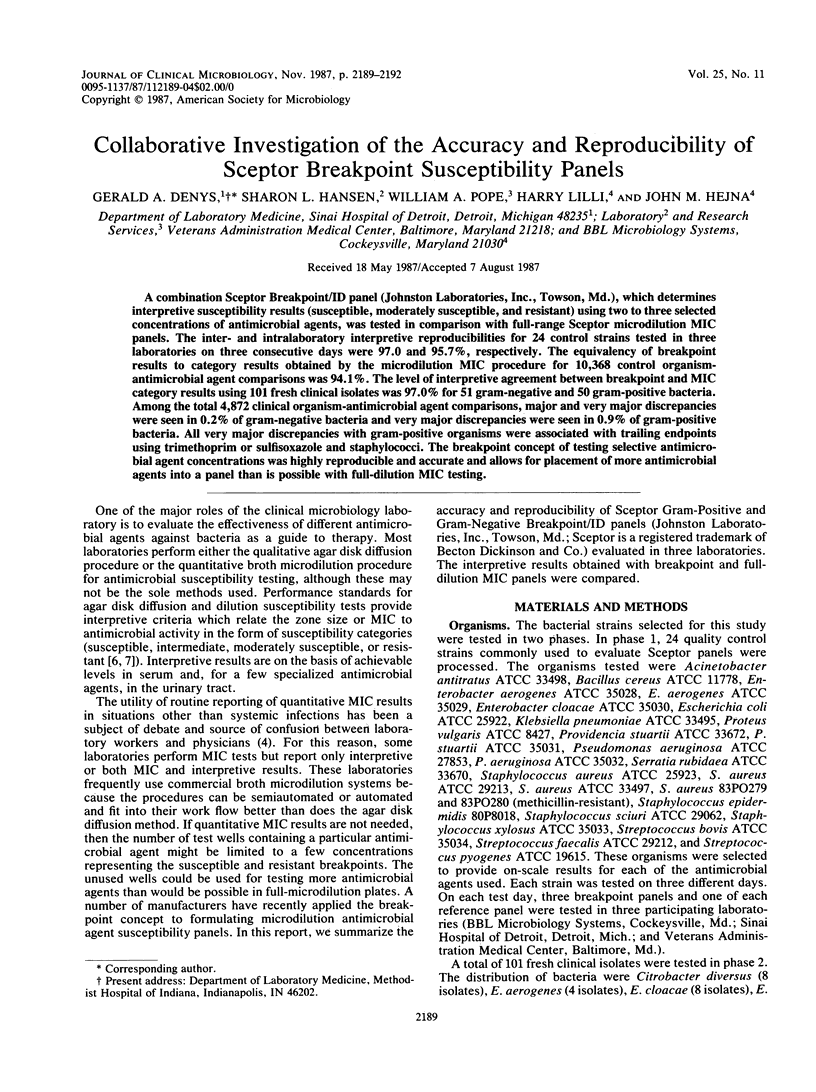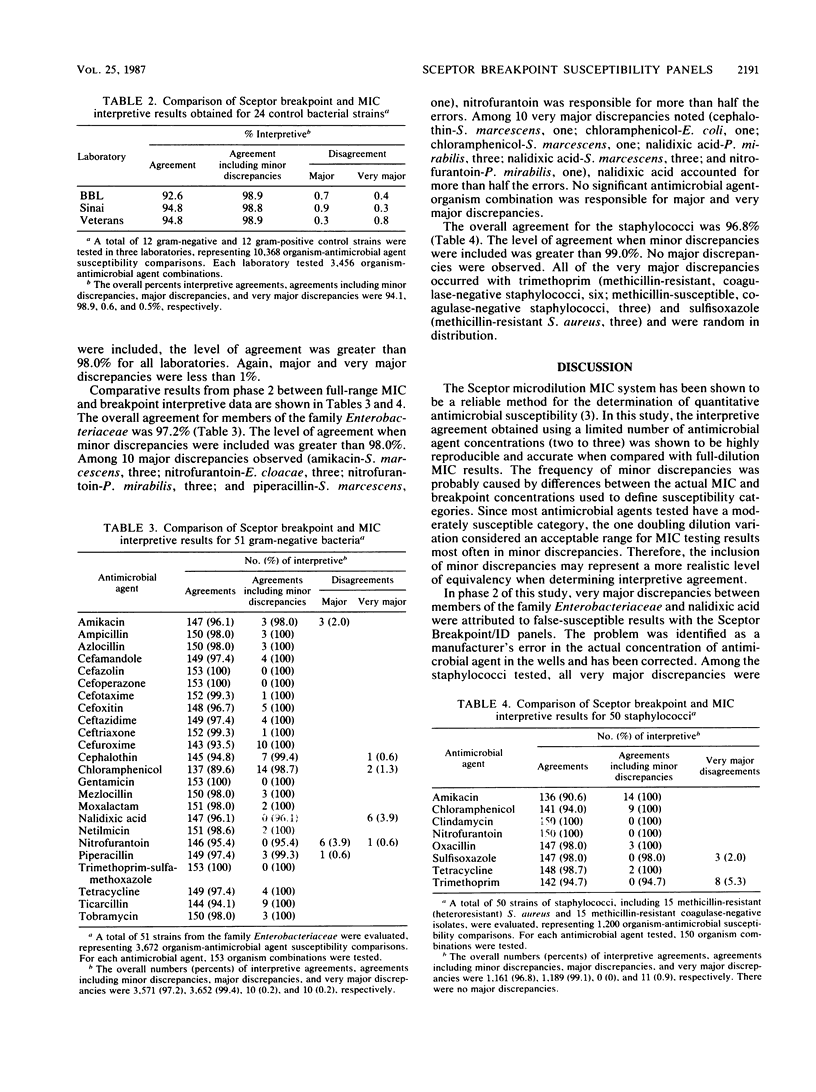Abstract
A combination Sceptor Breakpoint/ID panel (Johnston Laboratories, Inc., Towson, Md.), which determines interpretive susceptibility results (susceptible, moderately susceptible, and resistant) using two to three selected concentrations of antimicrobial agents, was tested in comparison with full-range Sceptor microdilution MIC panels. The inter- and intralaboratory interpretive reproducibilities for 24 control strains tested in three laboratories on three consecutive days were 97.0 and 95.7%, respectively. The equivalency of breakpoint results to category results obtained by the microdilution MIC procedure for 10,368 control organism-antimicrobial agent comparisons was 94.1%. The level of interpretive agreement between breakpoint and MIC category results using 101 fresh clinical isolates was 97.0% for 51 gram-negative and 50 gram-positive bacteria. Among the total 4,872 clinical organism-antimicrobial agent comparisons, major and very major discrepancies were seen in 0.2% of gram-negative bacteria and very major discrepancies were seen in 0.9% of gram-positive bacteria. All very major discrepancies with gram-positive organisms were associated with trailing endpoints using trimethoprim or sulfisoxazole and staphylococci. The breakpoint concept of testing selective antimicrobial agent concentrations was highly reproducible and accurate and allows for placement of more antimicrobial agents into a panel than is possible with full-dilution MIC testing.
Full text
PDF



Selected References
These references are in PubMed. This may not be the complete list of references from this article.
- Doern G. V., Dascal A., Keville M. Susceptibility testing with the sensititer breakpoint broth microdilution system. Diagn Microbiol Infect Dis. 1985 May;3(3):185–191. doi: 10.1016/0732-8893(85)90030-6. [DOI] [PubMed] [Google Scholar]
- Jones R. N., Thornsberry C., Barry A. L., Gavan T. L. Evaluation of the Sceptor microdilution antibiotic susceptibility testing system: a collaborative investigation. J Clin Microbiol. 1981 Jan;13(1):184–194. doi: 10.1128/jcm.13.1.184-194.1981. [DOI] [PMC free article] [PubMed] [Google Scholar]
- Kunin C. M., Chambers S. Responsibility of the infectious disease community for optimal use of antibiotics: views of the membership of the Infectious Diseases Society of America. Rev Infect Dis. 1985 Jul-Aug;7(4):547–559. doi: 10.1093/clinids/7.4.547. [DOI] [PubMed] [Google Scholar]
- McDougal L. K., Thornsberry C. The role of beta-lactamase in staphylococcal resistance to penicillinase-resistant penicillins and cephalosporins. J Clin Microbiol. 1986 May;23(5):832–839. doi: 10.1128/jcm.23.5.832-839.1986. [DOI] [PMC free article] [PubMed] [Google Scholar]
- Witebsky F. G., Maclowry J. D., French S. S. Broth dilution minimum inhibitory concentrations: rationale for use of selected antimicrobial concentrations. J Clin Microbiol. 1979 May;9(5):589–595. doi: 10.1128/jcm.9.5.589-595.1979. [DOI] [PMC free article] [PubMed] [Google Scholar]


